EDITOR’S NOTE
In the absence of formally defined National Interests and a National Security Policy framework, a fair amount of adhocism characterises our defence planning. With rising threat levels and our endeavours at becoming a reckonable military power capable of providing regional stability, it’s important for us to initiate a more structured approach to defence planning both in terms stating of our objectives and equipping our armed forces to achieve these. The author attempts to identify the lacunae and proposes a few measures to address the myriad issues involved.
INDIA’S DEFENCE POLICY: ISSUES & PERSPECTIVES
Does India have a Defence Policy? If the answer is “NO”, then the next question is: Does India require a National Security Policy or a doctrine? India has the third largest armed forces in the world and is surrounded by some of the most dangerous flash points and yet India does not have a Security Doctrine or Policy at the Apex level. How do the armed forces of India cope up with this reality? The lack of national security policy and doctrine directly impinges on the procurement process hampers the armed forces and the government to modernise the force or get the desired weapon personnel mix.
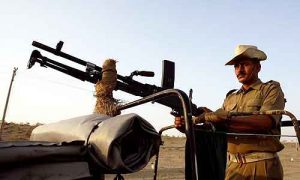
Image Courtesy: Pak Defence
The primary role of the armed forces of India is to save the nation from external aggression and internal disturbances. To fulfill this commitment the armed forces must have a policy guideline, which they can follow, and more importantly calibrate their requirements in terms of weapons profile and organizational structure including the manning levels. The role envisaged would define its size and shape. Currently the Indian Armed forces meaning the three services (Army, Navy, Air Force) and the Coast Guard are the primary organs of the state to defend or secure its territory. The BSF, CRPF, CISF, ITBP, SSB are Central Armed Police Forces and Assam Rifles and the SFF are the Paramilitary forces. These forces also contribute significantly towards this aim.
India is a huge country and its defense involves protecting the entire battle space: the land, sea, air, space and cyber. The Indian landmass borders six countries, namely Pakistan, Nepal, Bhutan, Myanmar, Bangladesh and China. The issue becomes more complex due to the varied terrain that the armed forces have to work in and the necessity to equip and train them accordingly. The western borders have the deserts, the northern include the mountains and high altitudes and the eastern borders are full of jungles and rivers. As if this is not enough India has a huge maritime border 7516 km and an EEZ of 2,305,143 Sq. km. The defense of this is a herculean responsibility and takes large amount of resources.
To get a perspective on the size of the armed forces: the total cadre strength of the Indian armed forces is 14.82 lakhs (approx). The Indian Army has 12.52 lakhs, Navy 79,000 and the Indian Airforce has 1.51 Lakhs, and a reserve force of 11.55 lakh. This makes the Indian Armed forces the third largest standing army in the world. We compare favourably with Pakistan, yet far away from China in terms of the military hardware and numbers.
A quick comparison would suggest that while the nearest rival above has numerical superiority yet it is not enough to gain a decisive offensive advantage. In absence of a stated defense policy by the government, the military are left to themselves or have to collaborate with the MoD (Ministry of Defence) to seek for themselves; how to offset this advantage as far as the stronger adversary and enhance it with the weaker one?
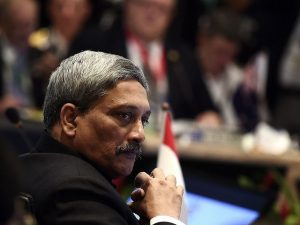
Image Courtesy: Swarajya
What is stated in the public domain is: there is an Operations Directive of the Raksha Mantri. This is a confidential document seen by a select few on a “need to know” basis. Its content is obviously not very detailed, otherwise the three services would have been quite happy deriving their respective operational directives from it without a clamour. For a country like India, which is on the cusp of transiting into a new power destination and which faces many challenges to its national security, it’s vital that our security needs are defined along with our national interests. A logical assessment of national interests would bring to fore the magnitude of the problems that our security establishments would be facing if they (national interests) have to defended or secured. For e.g., India’s national interests could be defined as follows:
* Ensuring territorial integrity of the Indian mainland and its island territories.
* Ensuring maintenance of peace and stability in all territories under the Indian dominion.
* Protection of Indian offshore assets.
* Maintenance of friendly relations with neighbouring countries.
* Protection of own EEZ against poaching and oil spills.
* Protect India’s space based assets.
* Provide immunity for Indian business and military from cyber poaching and cyber terrorism.
* Prevent a nuclear conflict.
A quick look at these very hastily drawn national interests would make it obvious that the task to secure them is enormous and would require concerted efforts at all levels i.e., civilian agencies as well as the military to ensure its execution. By virtue of the fact that the military is at the forefront, most of the responsibility would have to be borne by the military. If one were to take a small sub set of this envelop of national interest; that of defending the island territories and in that subset analyse the defence of Andaman & Nicobar Islands, it would entail the following:
* Presence: Physical presence of sufficient force for securing & defending the islands.
* Reach: Ability to reach the island territories from the mainland for logistics and transportation of additional force if need be.
* Air Space: Guarding of airspace between the islands and the mainland and prevention of air attacks on the island.
* EEZ: Guarding the EEZ surrounding the islands.
* Berthing Facilities: infrastructure to house the components of the services like the ships, aircrafts and guns and the troops involved.
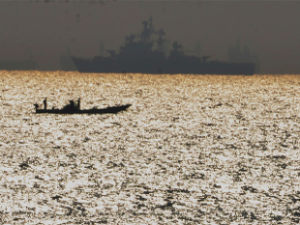
Image Courtesy: The Economic Times
Guarding a group of islands would involve some or all of the above and necessitating the requisite force, training and the budgetary provisions, which would be required for execution of such a task. The argument that has being made is: securing each of the national interests, involves huge amount of resources which can come only if dedicated financial allocations are made. A defence budget thus should be a collation of financial outlays to defend own national interests.
Defence Preparedness
What is the state of our national defense preparedness to safe guard our national interests? Much has been said about Gen VK Singh’s famous letter to the then Prime Minister (PM) bringing out the critical deficiencies in the operational readiness of the armed forces. Though defence ministry has tried, yet things don’t seem to have changed much. To trace the history of dismal defence spending, one has to start from the time of India’s independence, when the first PM Jawaharlal Nehru made known his dislike of matters military and his firm belief that military is a waste of resources, as diplomacy could resolve all issues. If the 1962 debacle broke that myth, then its effect did not last very long. In 1971, the Chief of Army Staff (COAS), Field Marshal Sam Manekshaw, had to refuse to go to war with Pakistan till the critical deficiencies were met. After the victory in Bangladesh war, the alignment of five year defence plans with the national five-year plan in 1974 did not realise the desired goals. Since then the defence five year plans are run without any financial commitments. All that is available is the annual defence budget which is based on the previous year’s budget and a rough guideline of how much more is needed to fund additional schemes being proposed that year, plus the inflation factor. A look at the budget for last five years would bring out this fact clearly.

Source: defproac.com/?p=2079
it’s a steady trend line and it does not show any other consistency other than that of inflation. This is very obvious in the next graph.

Source: defproac.com/?p=2079
The argument is: armed forces are unable to expend their capital budgets and hence there is no need to make additional provisions. There is some truth in the statement as the next graph would go to show.

Source: defproac.com/?p=2079
Only in the year 2010, did the capital budget get expended. If national security was a concern to the policy makers and government then this graph should surely have sent some shivers. The reality is that our forces are neither fully equipped nor fully modernised to secure national interests. Yet this hardly seemed to have resulted in any debate in the parliament or the media. That we have draconian procurement policy which in spite of five revisions does not provide the desired procurement flow, is a matter of concern to those in the executive and even the legislature.
There is a concept of the Long Term Integrated Defence Plans (LTIPP), but it gets no firm financial allocations. At least the first five years’ plan, which is definitive, must get a firm financial allocation. But limiting it to only such an allocation is not good enough. It must be coupled with two more measures: first, a friendlier DPP (Defence Procurement Procedure) and second; the provision of roll over of the capital budget for a period of three years preferably; a minimum two, otherwise.
There is an argument that for a country like India and the political climate that prevails in it, any more simplification of the DPP would jeopardize the complete executive functioning due to adverse political fallouts. Though there may be some truth in this argument, yet when weighed against the fact that the capital acquisitions are undertaken primarily to secure national interests, we have to find a way out. The emphasis on “Make in India” is not likely to bring fruits in the immediate future for reasons of gestation. Consequently, an interim measure to maintain the operational readiness of the security apparatus is mandatory. The necessity to involve all political parties and the stakeholders in formulation of long-term national interests could, to some extent, overcome the political opposition to the procurement processes, no matter who is in power.
Higher Defence Organisations
The involvement of the higher defence organisations in decision-making is critical to the functioning of our national defence policy. A few nodes of the hierarchy are further amplified beneath.
CCS (Cabinet Committee on Security). This is the highest body in India which legislates national interests, national security and national security policy which is synonymous with the National Defence Policy. Headed by the PM it includes four other cabinet rank ministers: Defence, Home, Finance and External Affairs.
NSC (National Security Council) Headed by the PM, it is an extra constitutional body, created by the legislative. Its functional head is the NSA (National Security Advisor) who is appointed by the prime minister. The NSC is responsible for advising the CCS on issues related to national security. It has a strategic policy group and an advisory board to provide inputs on matters of national security. Lately, it has been most active and is the lead agency to tackle day-to-day security related problems, like the Pathankot terrorist attacks or the raid in Myanmar. Since NSA is the functional head, he alone has the ear of the CCS or the PMO.
MOD (Ministry of Defence) Headed by the Raksha Mantri, this is the lead ministry to deal with national security in times of external aggressions. It has four departments and they are controlled by a secretary level appointee but overall controlled by the defence secretary. The service HQs, i.e., the Army, navy and the Air Force HQs, though integrated have a relationship of only being attached HQs. They have a limited role to play in the executive decision making in matters of national security or the defence policy.
CDS (Chief of Defence Staff). This appointment has not yet been created. The recommendations of the Kargil Review committee strongly recommended creation of a CDS for integrating the services and be a single point contact to the government for military advice. A CDS could largely mitigate the problems of services in articulation of their desire to have a comprehensive defence policy and its consequent funding to raise the appropriate defence structure. Currently this function is done by the Defence Secretary and the DG Acquisition. A Top down approach in setting a CDS would integrate the armed forces and the bureaucracy like no other measure can do. In absence of a CDS, his role is performed by a Chairman Chiefs of Staff Committee (COSC), an appointment held by the senior most service chief and the CISC (Chief of Integrated staff to COSC). All acquisition proposals are moved through the IDS (Integrated Defence Staff) HQ, headed by the CISC and the DAC (Defence Acquisition Council) which is headed by the Raksha mantra and controlled primarily by the Acquisition wing of the MOD. The DAC takes the final call on all acquisitions matters.
Service HQs. The Service HQs along with its three services are executors of decisions made by the CCS and conveyed through the MOD. They execute all security related orders on the ground. Their ability to shape the decision-making apparatus for national security in the current constitutional environs is next to nothing.
The higher decision making apparatus is the center of gravity for making a national defence policy or doctrine. It is essential that they feel it necessary in national interest to enunciate such a document or paper. As India finds itself in conflict with emerging Asian powers in terms of economic resources, the necessity to define and secure its national interests becomes even more necessary. China has done the same. “On January 23, the Politburo of the Communist Party of China (CPC) adopted the outline of a national security strategy. Chinese media reports did not go into detail about the strategy, but underlined the sense of urgency running through the document. The new strategy, without going into specifics, warned of “unpredictable” and “unprecedented” dangers facing China, both at home and abroad. To face these challenges, Xinhua said, “National security must be under the absolute leadership of the CPC’s efficient and unified command.”
Even Pakistan has attempted to make a national security document which they enunciated in 2013; The prime minister’s recent announcement of formulating a national security strategy and security policy was a long delayed but welcome development. Under the rubric of the national security policy will be the formulation of defence, foreign, economic, counter-terrorism and counter-insurgency policies. The same would be true of other nations with whom we have conflict of interests.
Conclusion
The narrative above is trying to make an obvious connection between the lack of articulation or absence of a national security policy and dismal state of defence preparedness in our country. If India were to articulate a comprehensive security policy at the highest level i.e., by the CCS, then it would allow our experts to draw out areas or tenets of national interests. The analysis of our national interests through scientific management tools like Net Assessment or Environment Scans coupled with SWOT analysis of our adversaries would give our country a fair assessment of the force structure that we need to build to look after our national interests.
The wish list of the force structure when converted into defence plans will allow the executive to decide upon the appropriate financial allocations and thus the defence plans like the five-year national plans will find assured financial support. This should remove the uncertainty of defence procurement if the measure to evolve the DPP continues and there is a provision of roll over of capital allocations into the next financial years. If seen in the correct perspective, these are links of a chain and these links have to be tied together if India is to gain its rightful place as a future power destination.
Maj Gen Nitin Gadkari (Retired)
(Disclaimer: The views and opinions expressed in this article are those of the author and do not necessarily reflect the official policy or position of BharatShakti.in)




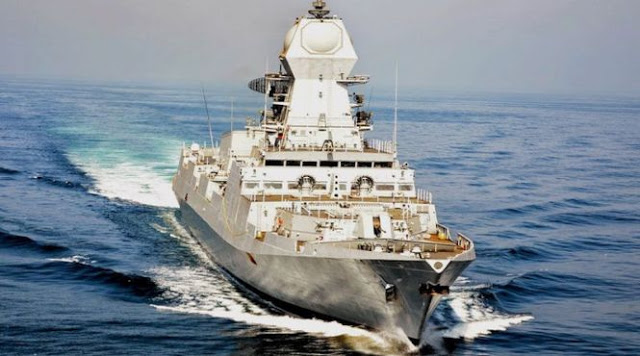

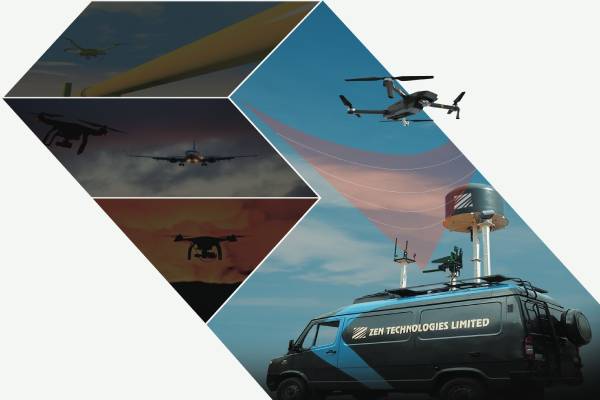



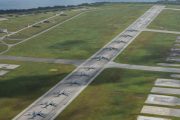







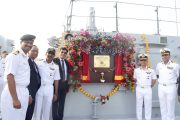















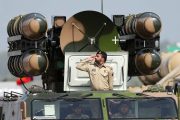


3 Comments
Anand
The Indian Coast Guard is under MOD and not MHA. Somehow author has made this mistake but Hopefully other details have been verified.
Admin
We made the changes. Thank you so much for taking keen interest in our pieces and pointing it out to us.
Murari Chaturvedi
Also a thorough study requires relationship between Service HQs and South Block!